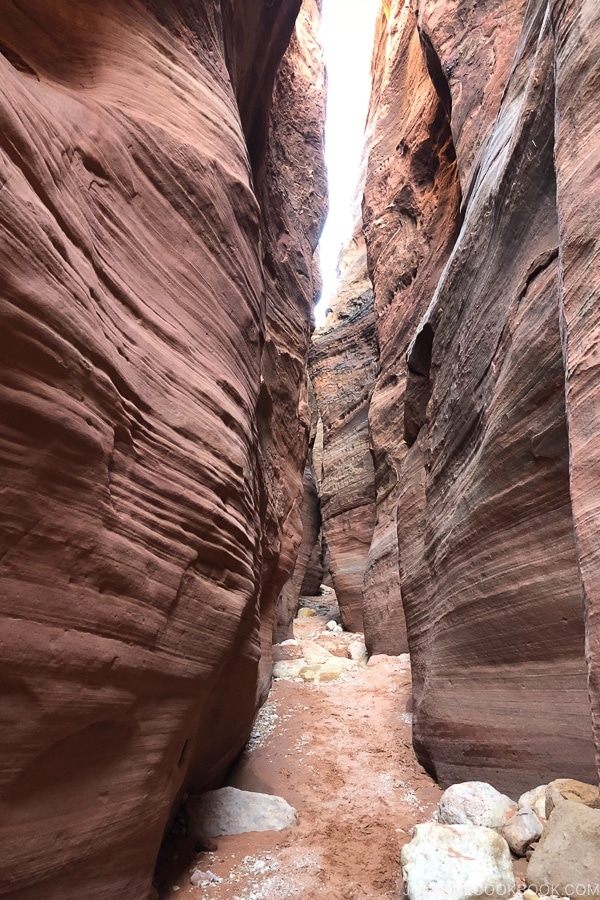HuffPost is now part of the Verizon Media family. We (Verizon Media) and our partners need your consent to access your device, set cookies, and use your data, including your location, to understand your interests, provide relevant ads and measure their effectiveness. Verizon Media will also provide relevant ads to you on our partners' products. Learn More
How Verizon Media and our partners bring you better ad experiences
To give you a better overall experience, we want to provide relevant ads that are more useful to you. For example, when you search for a film, we use your search information and location to show the most relevant cinemas near you. We also use this information to show you ads for similar films you may like in the future. Like Verizon Media, our partners may also show you ads that they think match your interests.
The Wave The area called Top Rock, is a collection of white Navajo sandstone formations. The south end of Top Rock divides North and South Coyote Buttes. The Wave is a chasm located on the northwest edge of Top Rock. The Wave is about.04 miles south of the Arizona and Utah state line. Top Arch Most hikers never venture this far past the Wave.
Learn more about how Verizon Media collects and uses data and how our partners collect and use data.

Select 'OK' to allow Verizon Media and our partners to use your data, or 'Manage options' to review our partners and your choices. Tip: Sign In to save these choices and avoid repeating this across devices. You can always update your preferences in the Privacy Centre.
The Buckskin Gulch, a canyon in southern Utah, is one of the main tributaries of the Paria River, which is itself a minor tributary of the Colorado River. It is the longest and deepest slot canyon in the southwest United States and may be the longest in the world.[citation needed] As such it is one of the premier destinations for slot canyon hikers, and receives a high amount of foot traffic.
At over 13 miles (21 km) in length it is often visited in conjunction with the longer Paria Canyon, although some prefer to make a long day trip out of the hike. With a distance of 20 miles (32 km), hiking this canyon in one day is possible. Wire Pass, a short tributary to the Buckskin, is an ideal alternative for a short day hike that still takes hikers through the narrow, curving features that are the hallmark of slot canyons.[1]
Access[edit]
Buckskin Gulch is reached via US Highway 89 or U.S. Highway 89A, and is approximately halfway between the towns of Kanab, Utah and Page, Arizona. There is a ranger station right near the bridge over the intermittently flowing Paria River, and the dirt road to the Gulch is approximately 2 miles (3.2 km) west of the station. You then go 8.4 miles (13.5 km) down the dirt road to the jump-off point. The Wire Pass entrance shares the same trailhead, Wire Pass Trailhead, with the equally spectacular Coyote Buttes, home to The Wave, a famous sandstone rock formation.
Regulations[edit]
Permits are required by law for both day hiking and overnight backpacking in the Buckskin Gulch-Paria Canyon-Vermilion Cliffs Wilderness Area. Permits can be obtained from the Bureau of Land Management office online. Only twenty overnight permits per day are allowed and group sizes are limited to ten persons. The overnight fee is $5.00 per person per day while day use permits are $6.00 per person per day. There is also a $6 fee per dog, per day. Due to the popularity of the canyon, permits typically sell out several months in advance. Campfires are prohibited and human waste cannot be buried and must be packed out in order to preserve the pristine condition of the area.[2][3] Buckskin Gulch lies within the Grand Staircase-Escalante National Monument and Paria Canyon-Vermilion Cliffs Wilderness Area of the Bureau of Land Management.
Hazards[edit]
Wire Pass and Buckskin Gulch generally do not require rappelling equipment, but there may be a few pour-offs or the necessity to wade in ankle- to chest-high water and/or mud. Hiking Buckskin Gulch is extremely challenging. Be prepared with extra clothes to wear for warmth after wading through cold, stagnant pools of water, rather than depending on campfires, which are prohibited in this confined environment. Additionally, the lack of sunlight in the canyon can make it much colder than the surrounding exposed desert. At one point along the route, there is a 15-foot (4.6 m) drop-off that usually has rope, but it is a good idea to bring at least 30 feet (9.1 m) of rope to navigate some of the pour-offs. Small areas of quicksand can also be found along the route.
Slot canyons are particularly dangerous due to the risk of flash floods. Storms more than 50 miles (80 km) away can send 100-foot-high (30 m) walls of water down the narrow canyons, and hikers have been killed in such events. Hikers should check conditions carefully and not rely on seeing the sky to judge the weather. If there is even a slight chance of rain, do not enter slot canyons.
See also[edit]
References[edit]
- ^Buckskin Gulch, www.americansouthwest.net, undated (accessed 18 January 2007)
- ^Paria Canyon-Vermilion Cliffs Wilderness BLM officeArchived 2007-02-03 at the Wayback Machine, www.az.blm.gov, Tuesday, February 6, 2007 (accessed 21 February 2007)
- ^Paria Canyon-Vermilion Cliffs Wilderness permit informationArchived 2007-03-09 at the Wayback Machine, www.az.blm.gov, Monday, July 10, 2006 (accessed 21 February 2007)
External links[edit]
Media related to Buckskin Gulch at Wikimedia Commons
Slot Canyon California
- Buckskin Gulch GPS map Buckskin Gulch at Wikiloc.com. See the trail on Google Maps and Google Earth.
Kanab Utah Slot Canyons
Coordinates: 37°00′06″N111°51′58″W / 37.00167°N 111.86611°W
Slot Canyons In Southern Utah


Comments are closed.